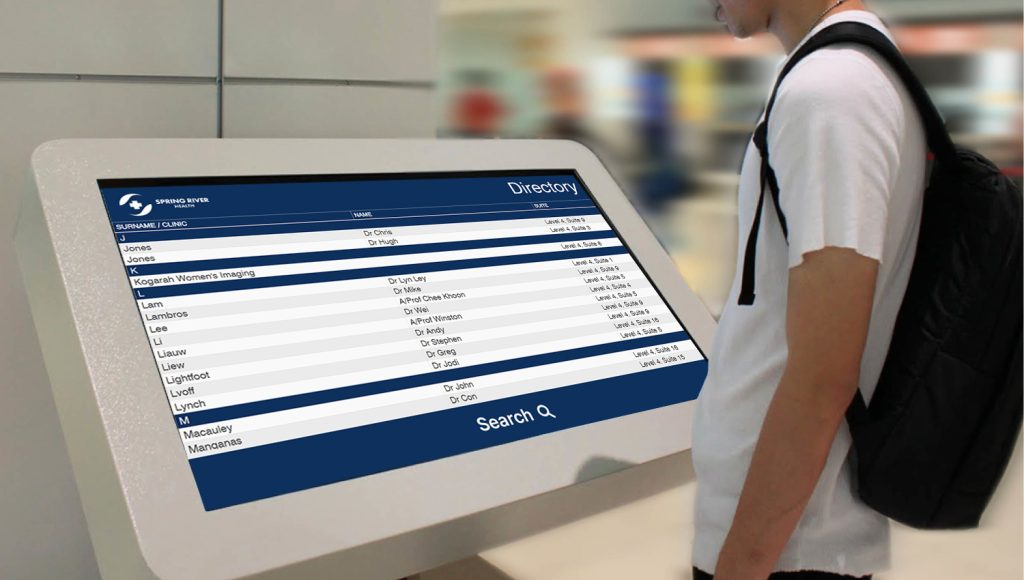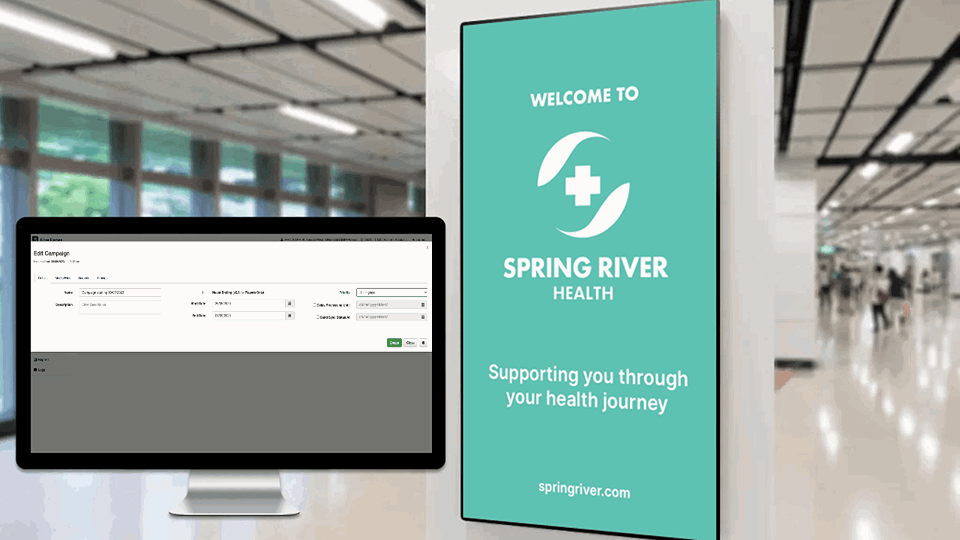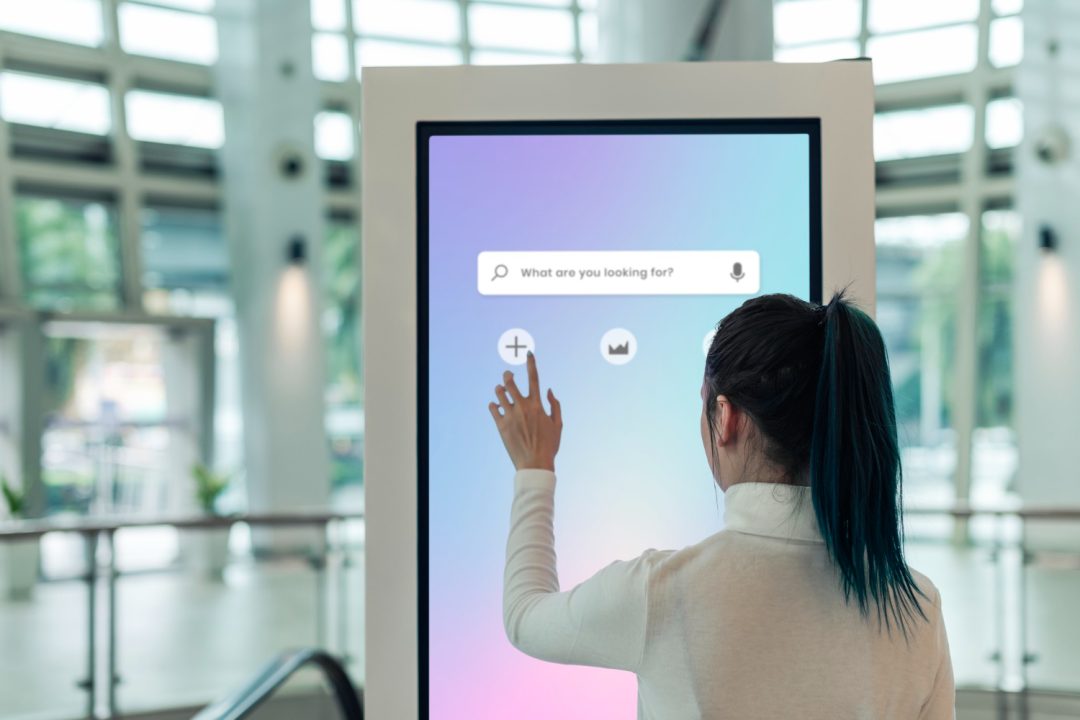In an era defined by digital transformation and evolving consumer behaviours, service providers are continually seeking innovative ways to enhance their engagement and streamline their operations. The digital directory board, often referred to as a digital directory is one of the simplest, yet most effective ways to bring digital experiences to your physical service environment to guide and educate consumers.
This integration between physical and digital worlds has consequently coined a new buzzword in town: Phygital. A process that incorporates digital functionalities within a consumer’s physical experience to create ease, convenience, and autonomy in the consumer journey. By doing so, organisations are increasing their brand value, customer retention and loyalty, while decreasing operational costs and inefficiencies.
In this article, we explore the phygital advantages that come with the adoption of digital directory boards. From improved customer experiences to operational efficiency, we delve into why providers across healthcare, government, education, retail, hospitality, and not-for-profit sectors are utilising this technology.
Digital Directory Boards: A Phygital Experience
Digital directory boards are advanced display systems that have replaced traditional, analogue directory boards in various public and private spaces. These digital screens provide real-time information, making them an invaluable addition to complex service organisations with multiple sites. Digital directories help locate and guide visitors, employees, customers and guests to a specific location or area of a building or facility.
There are various types of digital directory solutions, from non-touch static displays to interactive touchscreens. Non-touch static directories are commonly used in lobbies or reception areas where they display a list of locations within the facility usually by business or service name, floor number and/or suite number. Similarly, non-touch dynamic displays are non-interactive digital directories that show pre-scheduled content on rotation, typically directory information, with the addition of weather forecasts, traffic, news highlights or corporate messaging. On the other hand, touchscreen displays are interactive kiosks that allow users to search for more precise, tailored wayfinding information via categories, filters, and listings that can be combined with wayfinding maps.
Let’s take a closer look at the benefits of incorporating digital directory boards into your business operations.

Enhanced Visitor Experience
One of the primary advantages of digital directory boards is their ability to provide visitors with up-to-date information in a visually engaging manner. Whether it’s navigating a large hospital complex, a government office building, a sprawling university campus, a retail mall, a hotel, or a not-for-profit organisation’s headquarters, visitors often face the challenge of finding their way around.
Digital directory boards simplify this process by offering intuitive digital interfaces that allow users to find locations, services, or personnel effortlessly. Integration with back-end databases ensures that information remains current and accurate, contributing to a seamless and stress-free visitor experience.
For instance, in a healthcare facility, patients and their families can easily find their way to specific departments, doctors’ offices, and/or amenities within a hospital, reducing frustration during what can be an already challenging time.
Flexibility and Customisation
Digital directory boards offer ultimate flexibility when it comes to content and design. Businesses can tailor the information displayed to meet their specific needs and branding requirements. Whether you want to showcase promotions, event schedules, emergency alerts, or simply provide directions, digital directories can be customised to suit your needs and objectives.
Additionally, these systems support multimedia content such as images and videos, allowing you to create visually appealing displays that capture the attention of visitors. This flexibility makes digital directory boards not only functional but also an effective marketing tool to promote products, services, or upcoming events.
Instant Communication
In rapidly changing, busy environments, staying up to date is essential for consumer experience, and digital directory boards excel at instantly communicating information, real-time updates, and announcements. Remote control and local configuration of content allow organisations to instantly schedule what plays when and where. Alternatively, digital directory boards can be centrally managed to show tailored information or have multiple displays running in sync – no matter the size or number of locations. For example, in the education sector, universities can use these digital directories to instantly communicate classroom changes, exam locations, or campus events in real time, keeping students, faculty, and visitors always informed.
Similarly, in retail, businesses can use digital directories to guide customers to stores offering flash sales, new arrivals, or special promotions, driving foot traffic, and boosting sales. The ability to instantly communicate information keeps visitors engaged and informed.

Streamlined Operations and Efficiency
From an operational perspective, digital directory boards can significantly improve efficiency. By providing real-time information, integrating with other systems, providing customisation options, leveraging analytics, and facilitating emergency notifications, digital directories streamline processes, save time, and improve the overall efficiency of facilities and organisations.
In healthcare, for example, digital directories can integrate with appointment scheduling systems to streamline the check-in process for patients. Visitors can check in on arrival using touchscreen kiosks, receive notifications, and be guided to the appropriate service areas. This not only improves patient satisfaction but also reduces the burden on staff, allowing them to focus on more critical tasks.
Cost-effective and Environmentally Friendly
The long-term advantages and cost savings of utilising digital directory boards certainly outweigh the initial investment in this technology. Traditional static directories require regular updates and printing of new signage, incurring ongoing costs. In contrast, digital directories allow for instant updates at no additional printing or material expenses.
Furthermore, digital directories contribute to improved sustainability efforts. They reduce the need for printed materials and contribute to a more paperless environment, promoting eco-friendly practices and corporate social responsibility initiatives.
Elevating the end-to-end Visitor Experience
Digital directory boards go beyond just offering wayfinding information; they serve as an integral part of the end-to-end consumer experience transforming how consumers navigate and interact with an organisation’s physical environment. Whether it’s a hospital, university campus, corporate building or another setting, digital directories can work in harmony with existing systems to deliver a cohesive, phygital experience. Now more than ever, consumer experience has a significant impact on an organisation’s performance, hence utilising digital directory boards can enhance consumer satisfaction and efficiency across all stakeholders, reshaping how businesses operate.
If you’re ready to tap into the phygital power of digital directory boards to enhance your operations and engage with your customers and visitors more effectively, get in touch with our team about our digital directory board solutions and embark on a journey to redefine your visitor experience.



